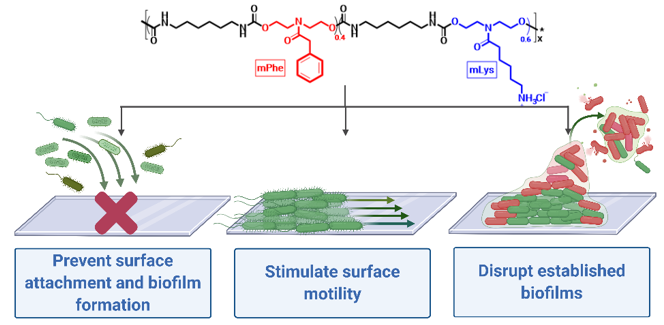Peptide-like polymers have potential as antibiofilm agents for wound healing applications
Biofilms are surface-associated communities of bacteria, embedded in a self-produced polymeric matrix and are remarkably resilient to physical and chemical stresses in the environment. According to US National Institutes of Health (NIH), biofilms account for over 80% of all microbial infections in the body.

Peptidomimetic polyurethane structure and antibiofilm properties
Recent work from The University of Akron demonstrates that antibiofilm efficacy is not dependent on high antibacterial efficiency. In a paper published in the Journal of the American Chemical Society titled, “Peptidomimetic Polyurethanes Inhibit Bacterial Biofilm Formation and Disrupt Surface Established Biofilms”, Apoorva Vishwakarma, Francis Dang, Allison Ferrell, Hazel Barton and Abraham Joy demonstrate that very effective antibiofilm agents can be designed from weak antibacterial polymers. These polymers can inhibit biofilm formation of several medically relevant bacteria like Pseudomonas aeruginosa, Staphylococcus aureus, and Escherichia coli in micromolar concentrations by preventing the bacteria from attaching to surfaces. Since these polymers are not toxic to mammalian cells at their biofilm-active concentrations, these polymers are being evaluated as potential antibiofilm agents in wound healing applications.
